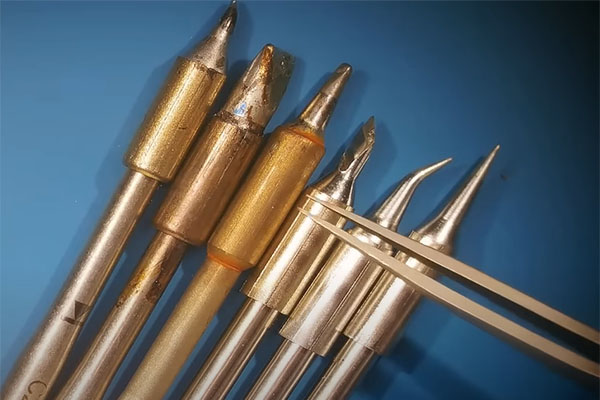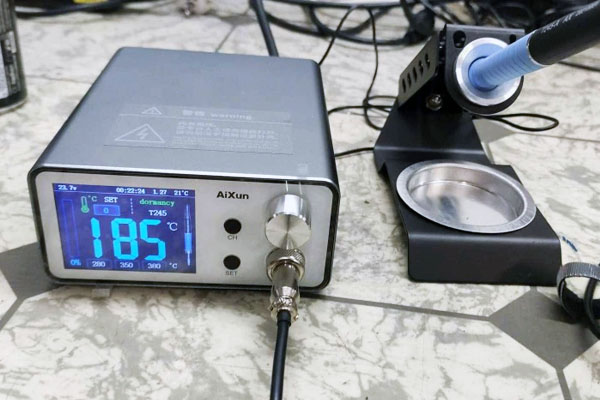
When it comes to soldering, selecting the right soldering iron tip is crucial for achieving successful and precise results. Each soldering task requires a specific type of tip designed for the job. In this article, we'll explore various soldering iron tips and their ideal uses to help you make an informed choice.

1. Chisel Tip
The chisel tip is perhaps the most versatile option and suitable for a wide range of soldering tasks. Its flat, wide surface makes it perfect for through-hole soldering and working with larger components. This tip provides good heat transfer and a stable soldering experience.
2. Conical Tip
For precision work, especially in tight spaces or with small surface-mount components, the conical tip is an excellent choice. Its pointed shape allows for pinpoint accuracy when applying solder, making it indispensable for intricate electronic work.
3. Bevel Tip
The bevel tip combines features of both the chisel and conical tips. It strikes a balance between precision and heat transfer, making it suitable for various soldering tasks. The bevel shape helps deliver controlled heat to the joint.
4. Knife Tip
Knife tips have a flat edge with a slight curve, making them ideal for tasks like drag soldering and spreading solder evenly on flat surfaces. They are efficient at transferring heat and are handy for surface mount devices (SMD) work.
5. Hoof or J-Tip
Designed specifically for soldering SMD components, hoof or J-tips are invaluable for drag soldering and soldering multiple pins simultaneously. Their shape allows for effective heat distribution in compact spaces.
6. Micro Tip
For intricate and delicate soldering work, such as fine-pitch components or delicate electronics, micro tips are essential. Their extremely fine and pointed design enables precise control over solder application.
7. Soldering Spatula Tip
When soldering larger areas, connectors, or surface mount devices (SMD), soldering spatula tips are the go-to choice. They provide a broad surface for efficient heat transfer, making them perfect for these types of applications.

To determine the best soldering iron tip for your project, consider the following factors:
Component Type: Think about the type of components you'll be soldering. Different components may require different tip shapes and sizes.
Joint Size: The size of the solder joints matters. For smaller joints, a finer tip is preferable, while larger joints may require a broader tip.
Precision: If your work demands precision, opt for a tip that matches the intricacy of the task.
Versatility: Having a variety of tips on hand is a good practice to cover a wide range of soldering scenarios.
Remember that the right tip can make a significant difference in the quality of your soldering work, so choose wisely.

Apart from the tip, the wattage of your soldering iron is another critical factor to consider. The wattage determines the iron's ability to heat up and recover quickly, which is essential for efficient soldering. Let's explore some general guidelines for selecting the appropriate wattage:
1. 15-40 Watts: Soldering irons in this range are ideal for delicate electronic components, such as surface-mount devices (SMD) and small through-hole components. They heat up rapidly and offer precision, making them suitable for tasks that demand accuracy.
2. 40-80 Watts: These soldering irons are versatile and capable of handling a wide array of soldering tasks, from small electronics to medium-sized components. They strike a good balance between precision and power.
3. 80-150 Watts: If you're tackling larger projects that involve heavy-duty soldering on larger components, connectors, or even light-duty soldering on wires and cables, soldering irons in this wattage range are suitable.
4. 150+ Watts: High-wattage soldering irons are typically reserved for industrial and heavy-duty soldering applications. They excel in tasks that involve soldering thick wires, large connectors, and other heavy-duty jobs.
when choosing a soldering station, consider both the tip type and the wattage. The tip's shape and size should match your specific soldering task, while the wattage should align with the scale and demands of your projects. Additionally, prioritize quality and temperature control for a safe and effective soldering experience.
 WhatsApp
WhatsApp